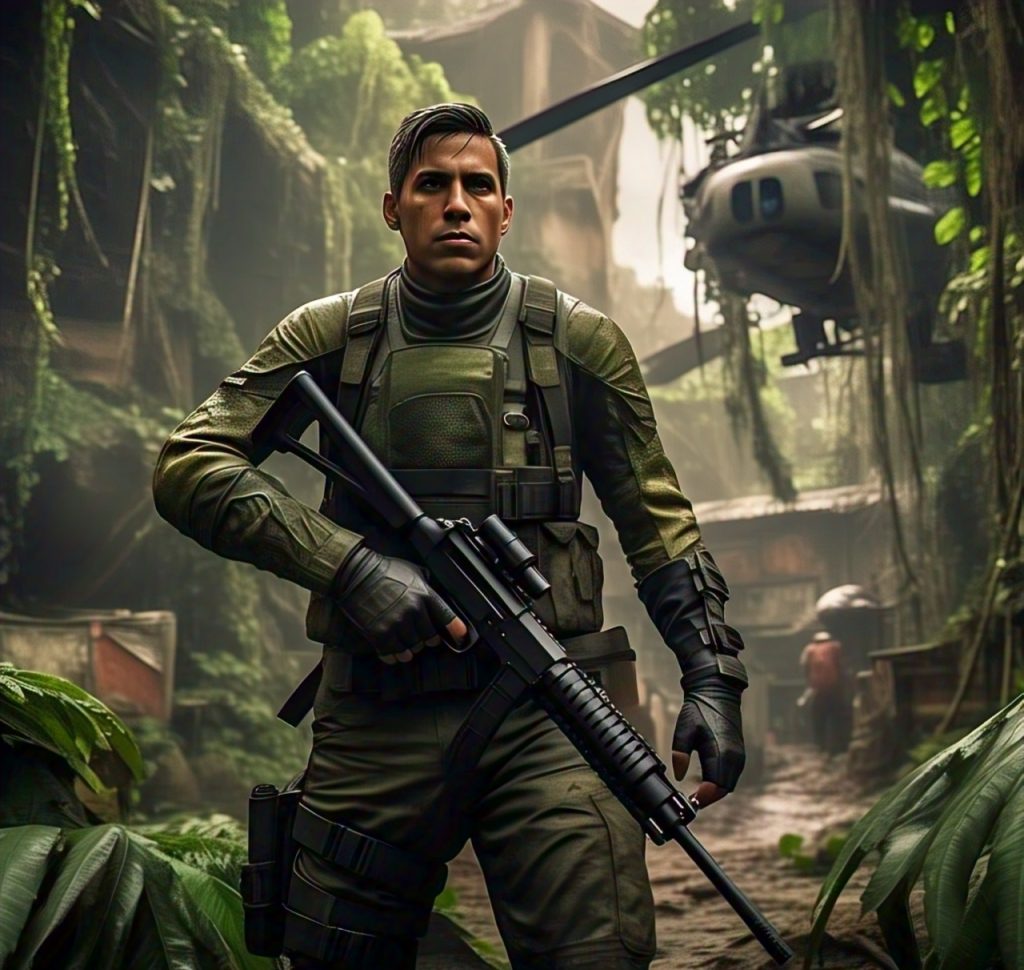Far Cry 6, developed by Ubisoft Toronto and released on October 7, 2021, is the sixth main installment in the iconic Far Cry series. Known for its open-world chaos, gripping narratives, and morally complex antagonists, the series has built a reputation for delivering immersive experiences. Far Cry 6 takes players to the fictional Caribbean island of Yara, a tropical paradise frozen in time due to decades of authoritarian rule. With a sprawling world, a charismatic villain, and a focus on revolutionary themes, the game offers a compelling blend of action, storytelling, and exploration. This article explores the key elements of Far Cry 6, including its setting, narrative, gameplay mechanics, and cultural impact, while reflecting on its strengths and areas for improvement.
The Setting: Yara, a Land of Beauty and Oppression
Far Cry 6 introduces players to Yara, a vibrant yet oppressed island nation inspired by Cuba and other Latin American countries. The developers at Ubisoft Toronto meticulously crafted a world that feels alive, with lush jungles, sprawling urban centers, and dilapidated rural areas. Yara’s aesthetic is a blend of mid-20th-century architecture and modern decay, reflecting the island’s economic stagnation under the iron fist of its dictator, Antón Castillo.
The game’s world is one of its standout features. From the bustling capital city of Esperanza to the tobacco fields of Madrugada, each region of Yara has a distinct identity. The attention to detail in the environment—whether it’s the propaganda posters plastered across city walls or the vibrant street markets—immerses players in a society on the brink of collapse. The soundtrack, featuring a mix of Latin American music and original compositions by Pedro Bromfman, enhances the atmosphere, making every journey through Yara feel authentic.
Yara’s beauty contrasts sharply with its political turmoil. The island is ruled by Antón Castillo, a dictator who promises prosperity through the production of Viviro, a miracle cancer-curing drug derived from Yara’s tobacco fields. However, Viviro’s production relies on slave labor and toxic chemicals, creating a humanitarian crisis. This dichotomy between paradise and oppression sets the stage for the game’s central conflict: a revolution led by the guerrilla group Libertad.
The Narrative: A Tale of Revolution
At the heart of Far Cry 6 is its narrative, which revolves around Dani Rojas, a reluctant hero who becomes a key figure in the fight against Castillo’s regime. Players can choose to play as a male or female Dani, a decision that adds a layer of personalization to the experience. Dani’s journey begins as an orphan trying to escape Yara, but a series of events thrusts them into the role of a guerrilla fighter.
The story explores themes of resistance, sacrifice, and the cost of freedom. Unlike previous Far Cry games, which often focused on a single charismatic villain, Far Cry 6 distributes its narrative weight across multiple characters. Antón Castillo, portrayed by Giancarlo Esposito, is the game’s central antagonist. Esposito’s performance is a highlight, bringing depth to a character who is both ruthless and tragically human. Castillo believes he is saving Yara, but his methods—forced labor, executions, and chemical warfare—reveal his tyranny.
Supporting characters, such as Libertad leader Clara García and eccentric guerrilla Juan Cortez, add complexity to the narrative. Each region of Yara is controlled by a different faction, and players must unite these groups to overthrow Castillo. This structure allows for diverse perspectives on the revolution, though it occasionally dilutes the story’s focus. Some players may find the narrative predictable, as it follows familiar Far Cry tropes of rebellion against a dictator, but the strong performances and emotional moments keep it engaging.
Gameplay: Chaos and Creativity
Far Cry 6 retains the series’ signature open-world gameplay, blending first-person shooting, stealth, and exploration. The game introduces several new mechanics while refining elements from previous entries. One of the most notable additions is the “Resolver” philosophy, a DIY approach to weaponry and equipment inspired by Yara’s resource-scarce environment.
Resolver weapons, such as a flamethrower made from scrap metal or a CD-launcher that blasts enemies with music, are delightfully absurd and encourage creative combat. Players can also customize their arsenal with mods, such as incendiary rounds or silencers, allowing for varied playstyles. The Supremo backpacks, which grant abilities like launching missiles or creating an EMP blast, add a layer of spectacle to the gameplay, though some may find them overpowered.
The game’s open world is filled with activities, from capturing military outposts to liberating checkpoints and completing side missions. The introduction of co-op multiplayer allows players to tackle these challenges with a friend, enhancing the chaotic fun. However, the sheer volume of activities can feel overwhelming, and some missions suffer from repetitive design, a common critique of Ubisoft’s open-world formula.
Stealth mechanics have been improved, with Dani able to holster their weapon to blend in with civilians, adding a layer of strategy to infiltrating enemy bases. The game also features a robust progression system, with gear and upgrades tied to the player’s actions rather than a traditional skill tree. This approach rewards exploration and experimentation, though it can make inventory management cumbersome.
Antón Castillo: A Villain for the Ages
No discussion of Far Cry 6 would be complete without highlighting Antón Castillo. Giancarlo Esposito, known for his roles in Breaking Bad and The Mandalorian, delivers a captivating performance that elevates the game. Castillo is not a cartoonish villain but a complex figure driven by a twisted sense of duty. He believes his harsh methods are necessary to secure Yara’s future, particularly for his son, Diego, whom he grooms to succeed him.
The dynamic between Antón and Diego is one of the game’s emotional cores. Diego, a young boy caught between his father’s expectations and his own moral compass, adds a layer of tragedy to the story. Esposito’s ability to convey both menace and vulnerability makes every cutscene involving Castillo a highlight. However, some players may feel that Castillo’s screen time is limited, as the game juggles multiple storylines.
Cultural Representation and Controversy
Far Cry 6’s depiction of a Latin American-inspired setting has sparked both praise and criticism. Ubisoft consulted with cultural experts to ensure authenticity, and the game’s portrayal of Yara’s music, language, and history reflects this effort. The use of Spanish dialogue, voiced by native speakers, adds to the immersion.
However, some critics argue that the game’s portrayal of a revolution in a fictional Latin American country risks trivializing real-world struggles. The narrative avoids taking a strong political stance, which may disappoint players expecting a deeper exploration of the themes it raises. Ubisoft’s decision to create a fictional setting rather than directly referencing a real country allows for creative freedom but also sidesteps some of the complexities of Latin American history.
Technical Performance and Reception
Far Cry 6 launched on multiple platforms, including PC, PlayStation, and Xbox, with versions optimized for next-gen consoles. The game’s visuals are stunning, with detailed environments and impressive lighting effects. However, some players reported technical issues, such as bugs and performance dips, particularly on older hardware.
Critically, Far Cry 6 received mixed-to-positive reviews. Critics praised its vibrant world, engaging combat, and Esposito’s performance, but some felt it played it safe, adhering too closely to the Far Cry formula. The game’s length, with a main story spanning 20-30 hours and additional content pushing past 50 hours, was both a strength and a weakness, as some players found the pacing uneven.
Legacy and Impact
Far Cry 6 is a bold addition to the series, offering a visually spectacular world and a memorable antagonist. Its focus on revolution and resistance resonates in a world grappling with political unrest, and its gameplay delivers the chaotic fun fans expect. While it doesn’t reinvent the Far Cry formula, it refines it, providing hours of entertainment for both newcomers and veterans.
The game’s cultural impact extends beyond its narrative. Its soundtrack, art design, and voice acting celebrate Latin American culture, even if imperfectly. For many players, Far Cry 6 is a reminder of the power of video games to tell stories that are both thrilling and thought-provoking.
In conclusion, Far Cry 6 is a worthy entry in the Far Cry series, blending explosive action with a compelling story of rebellion. Its strengths—stunning visuals, creative gameplay, and a standout villain—make it a must-play for fans of open-world shooters. While it may not break new ground, it delivers an experience that is both familiar and fresh, cementing Yara as a memorable destination in gaming history.




